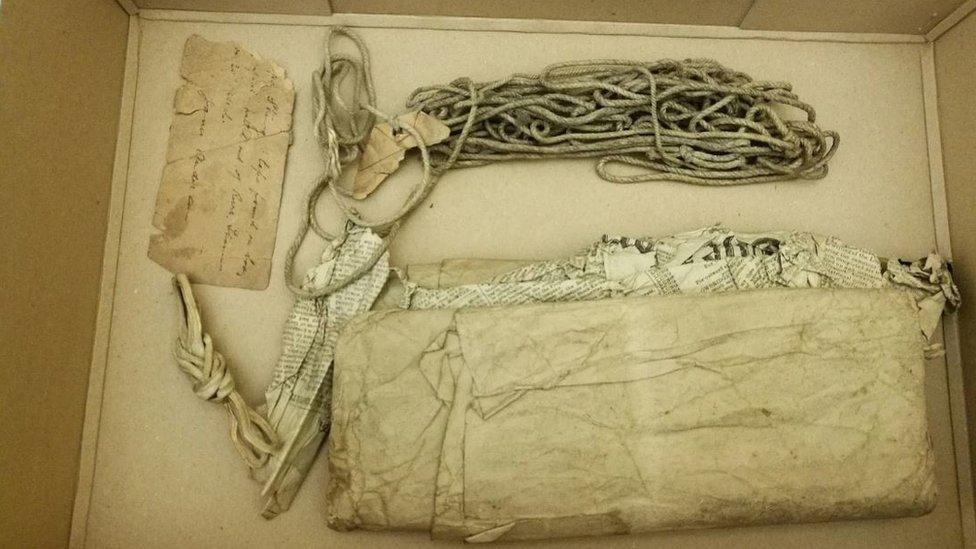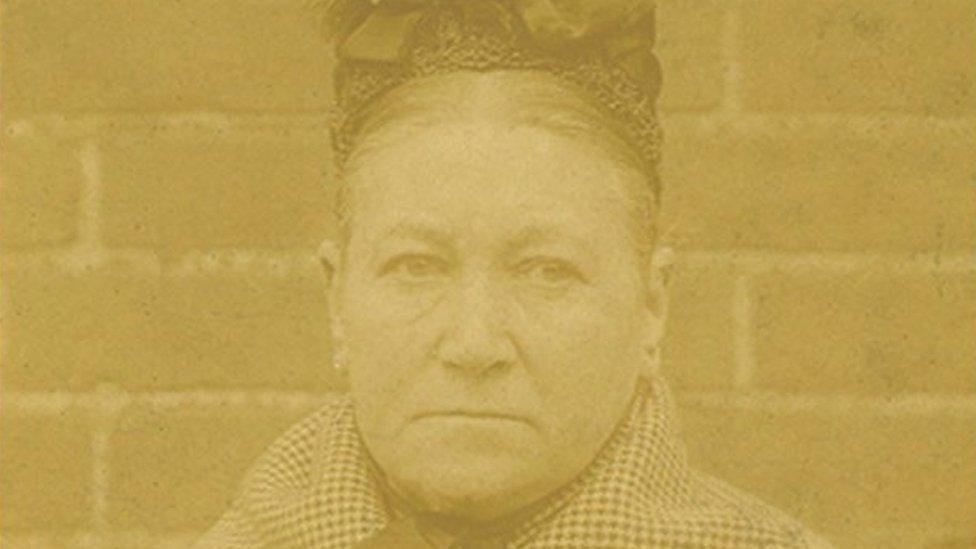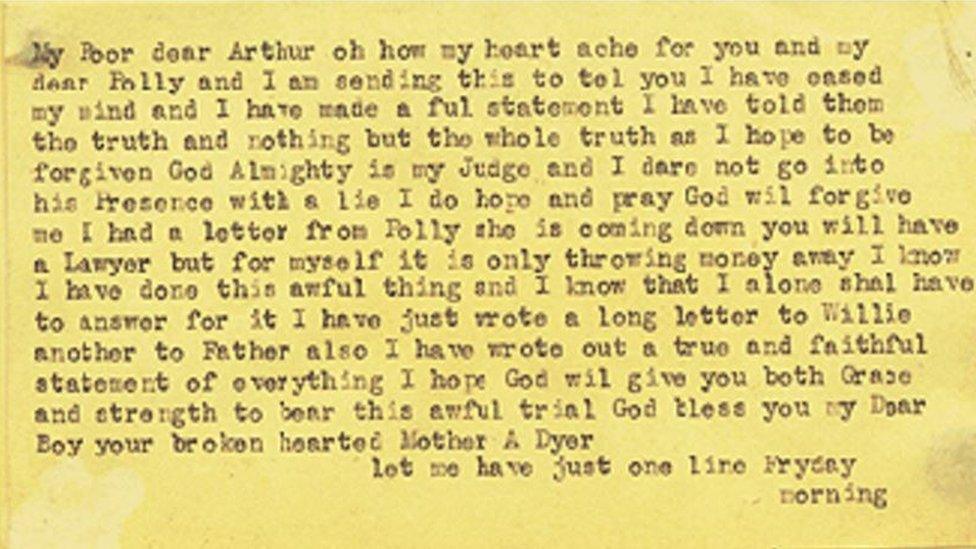Victorian baby killer Amelia Dyer evidence found in loft
- Published

The artefact includes brown paper packaging and string which concealed the body of a baby girl
Packaging used to conceal a baby murdered by Victorian serial killer Amelia Dyer has been found in a loft.
Dyer murdered up to 400 infants over a 20-year period and was found guilty of "baby farming" murders in 1896, Thames Valley Police museum said.
Paper packaging containing the body of baby Helena Fry was fished out of the Thames in Reading in 1896, which helped secure Dyer's conviction.
It has been rediscovered by a relative of the arresting officer in the case.
A box containing the brown paper packaging, string, white edging tape, and an evidence tag, was discovered in a loft by the great-great-grandson of DC James Beattie Anderson.
It has now been donated to the museum in Sulhamstead, Berkshire.

Amelia Dyer killed her victims by strangling them with white edging tape before throwing them into the Thames
Following the discovery of the baby's body, DC Anderson analysed the paper and discovered a faintly written name and address.
It led police to Dyer's home in Kensington Road, Reading.
Museum curator PC Colin Boyes said: "It is likely that detectives would be responsible for bringing evidence to court themselves in the Victorian ages.
"And so the packaging - which was evidence to convict Dyer of Helena Fry's murder - had likely been kept and stored in the loft since 1896."

Who was Amelia Dyer?

Transcription of Amelia Dyer’s confession, H. M. Prison, Reading, 16 April 1896
Dyer moved to Reading from south Wales in 1895.
She advertised to adopt or nurse a baby in return for a fee, but killed many of the infants within days.
Dyer initially drugged her victims with opium-based products, which would leave them in a vegetative state until they died.
After surgeons became suspicious, she strangled the infants with white tape. She then wrapped their bodies in paper packages and bags and dumped them in rivers.
The body of Helena Fry was found wrapped in brown packaging by bargeman working on the Thames in Reading on 30 March 1896.
Six more bodies were discovered the following month. Further evidence pointed to at least 12 murders, but she is believed to have killed hundreds more.
Dyer was sentenced to death and went to the gallows at Newgate prison on 10 June 1896, aged 57.
Source: Thames Valley Police Museum
